Start Licensing’s Ian Downes takes a look at some recent collabs in the fashion space.
Over recent years one of the most significant trends in licensing has been the rise of the collaboration or as it is more often referred to the ‘collab’. These tend to be partnerships between well-known brands or designers coupled with licensed properties.
Most often they pop up in the fashion sector. It is difficult to be certain what commercial arrangements are in place for collabs, but I suspect most are forged on a revenue neutral basis or indeed in some cases, particularly projects with well known designers, I suspect the licensed property owner pays the designer. They are certainly part of the licensing landscape now and are used frequently.
For the rights owner a collab can create PR noise, it can open up new distribution channels and also act as a test bed for future developments. My concern is that it is a technique that is maybe being overused and sits on the licensing ‘to do list’ without detailed thought given to its role in the strategic development of a licensed property.
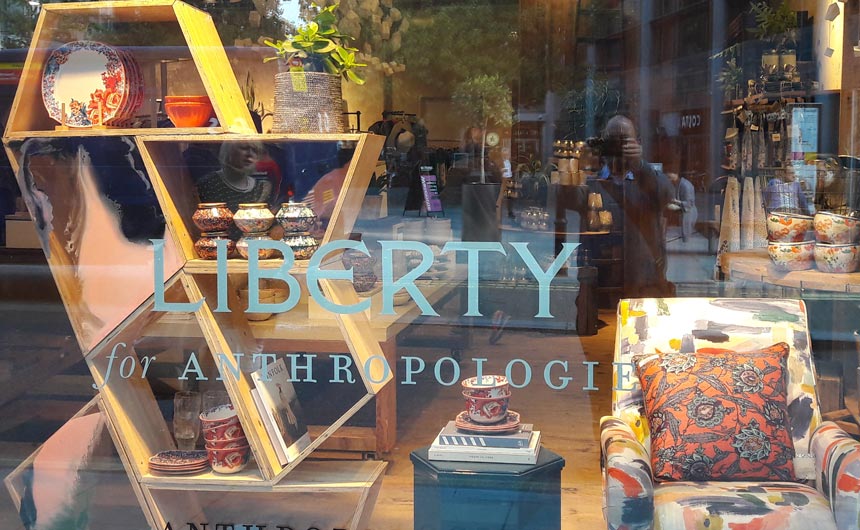
I spotted two interesting collabs this week which I suspect were forged for different reasons. The first was a partnership between retailer Anthropologie and Liberty. Anthropologie has developed a range of products using iconic Liberty prints with a contemporary styling and product design. The range featured in Anthropologie’s windows and on large display space in store. The collection looked good – bright, colourful, fresh and interesting.
I suspect Liberty was keen to showcase its design patterns to a new audience in a go-ahead retailer that is a style setter, while Anthropolgie was able to show its design flair using a classic design brand and potentially bring in some new cutomers. It is a newsworthy partnership and also has international appeal.
I spotted the collection in Anthropologie’s Shoreditch store – an area that is popular with younger consumers, the design community and tourists. For Liberty, being in locations like this appeals as it gives the brand a presence in ‘happening’ areas and is an outreach programme beyond the flagship store.
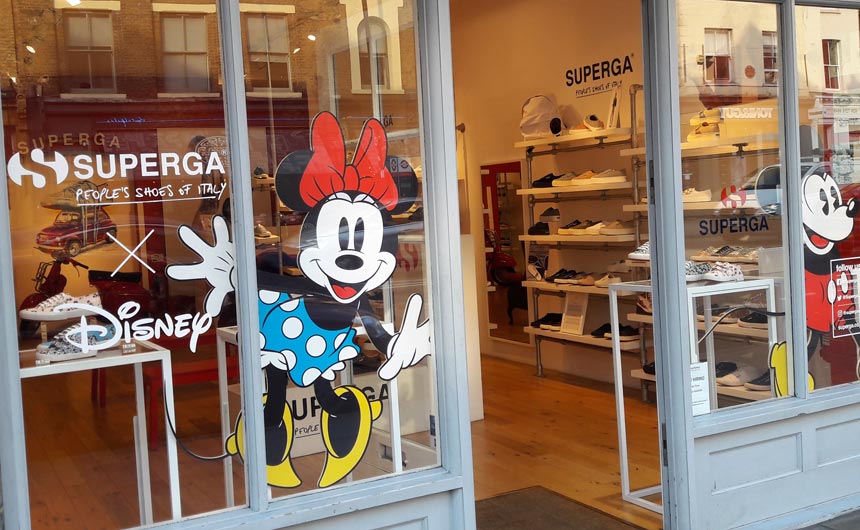
The other collab I saw seemed more of an opportunistic one to create noise and is maybe one formed with a shorter timeframe in mind. It was in a short term ‘pop up’ style store in Spitalfields Market. The partnership was between footwear brand Superga and Disney. It featured classic Disney characters Mickey and Minnie with allover repeat prints. It was well presented in windows and in-store – certainly eyecatching and I am sure drew consumers into store where the Disney range was part of a wider product offering. Given Superga is an Italian brand, it may well be that this partnership started in Italy and has been ‘imported’ as part of the footwear brand’s ‘pop up’ activity.
Footwear brands seem to use collabs a lot with brands like Converse and VANS featuring a number of licensed ranges recently, but these seem to have a relatively short shelf life. I think they do create interest and generate column inches in the right places, but my concern is that in some sectors collabs are becoming increasingly short-term and the market a little more cluttered.
I hope when these type of partnerships are forged that there is a clear vision on their purpose and what the objectives behind it are. The Anthropologie x Liberty one seems to be an example of a partnership that has been well crafted and with a long-term plan behind it. I can see this leading onto other developments between the two companies. Another good example of a collab that seems to have worked well and has a long-term benefit is the partnership between Disney and Cath Kidston – I believe this is now onto it’s third or fourth activation. I think in this case the deal behind it probably has more elements of a conventional licensing deal about it with a revenue flow back to Disney.
Retail is an increasingly tough part of the licensing mix – collabs coupled with pop-up retail are one way of breaking through the crowded retail field. They become real time tests that can be used to persuade retailers to stock licensed ranges. Against this background, it is encouraging to see how some mainstream retailers are embracing licensed brands within their stores, recognising that a focus on successful licensed brands can be a useful focus for them.
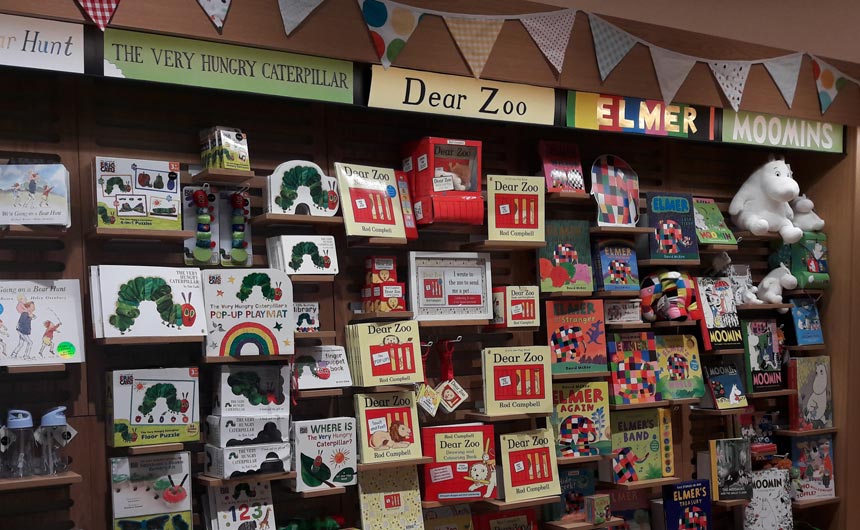
I noticed in book retailers Foyles and Waterstones that they have created focused branded areas for a number of well-known properties such as Moomins, The Very Hungry Caterpillar, Peter Rabbit and Elmer. Interestingly in Foyles, Julia Donaldson was given her own space. The core product is of course books but other products such as plush feature.
The retailers have recognised the status of these brands and their consumer appeal. This is a great foundation for licensees to develop business in book retail. That said I think only certain products will work in this environment – plush, puzzles, stationery, giftware and greetings cards for example. It is encouraging to see major retailers taking a focused approach to character brands.
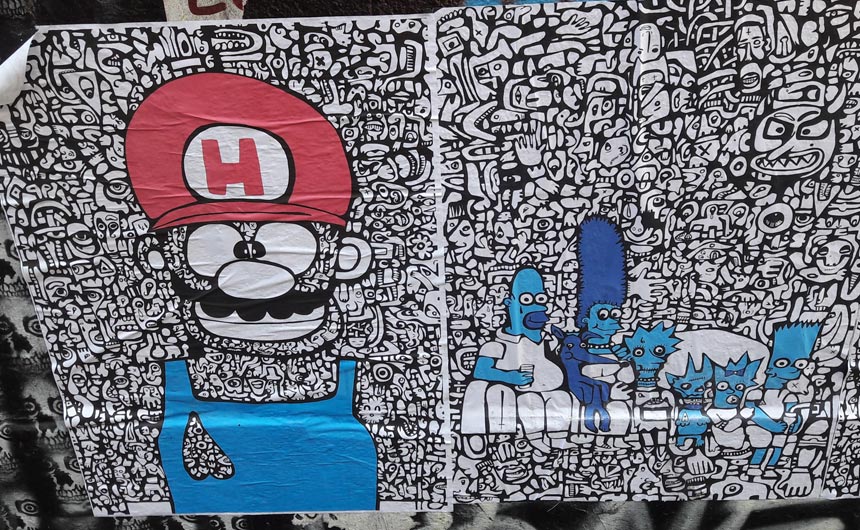
For those of you who work in design and style guide development, you could do a lot worse then take a look at street art for inspiration. Recent trips to Nottingham and Shoreditch highlighted how often famous characters feature in street art work – most often with an interesting design twist. Maybe off model and 100% unofficial, but certainly throwing up some interesting design ideas.
This week I spotted some representations of The Simpsons and Super Mario that gave a new twist to classic characters. Could be a starting point for style guide developments.
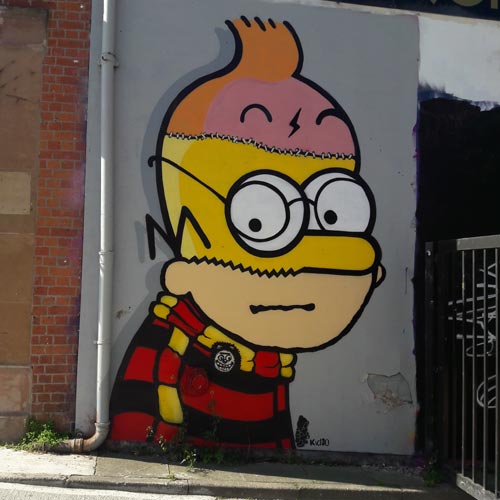
In Nottingham I also saw what I think is the character ‘mash up’ to end all mash ups. A wonderful piece of street art that featured elements drawn from Tintin, The Simpsons, Charlie Brown, Dennis the Menace, Gnasher and ( I think ) Harry Potter all merged together to create a striking street art feature. A super character. The King of Collabs.
While admiring the artwork I pondered how a real world collab like that would come together… my conclusion was that it would be impossible. Imagine the paperwork trail…
Ian Downes runs Start Licensing, an independent brand licensing agency. His Twitter handle is @startlicensing – he would welcome your suggestions for what to look out for.

































